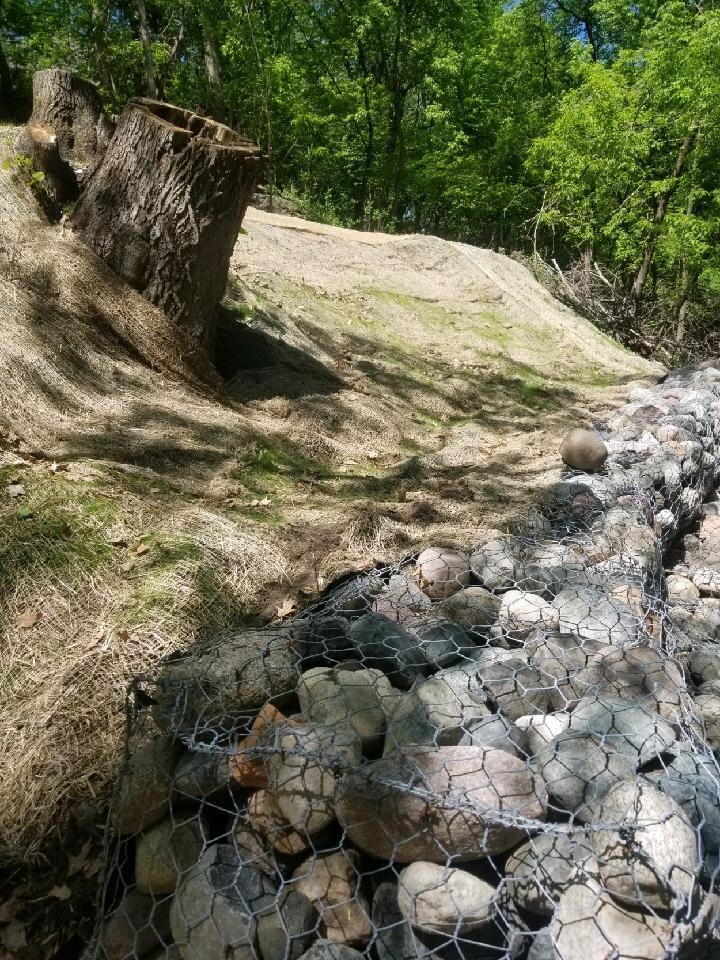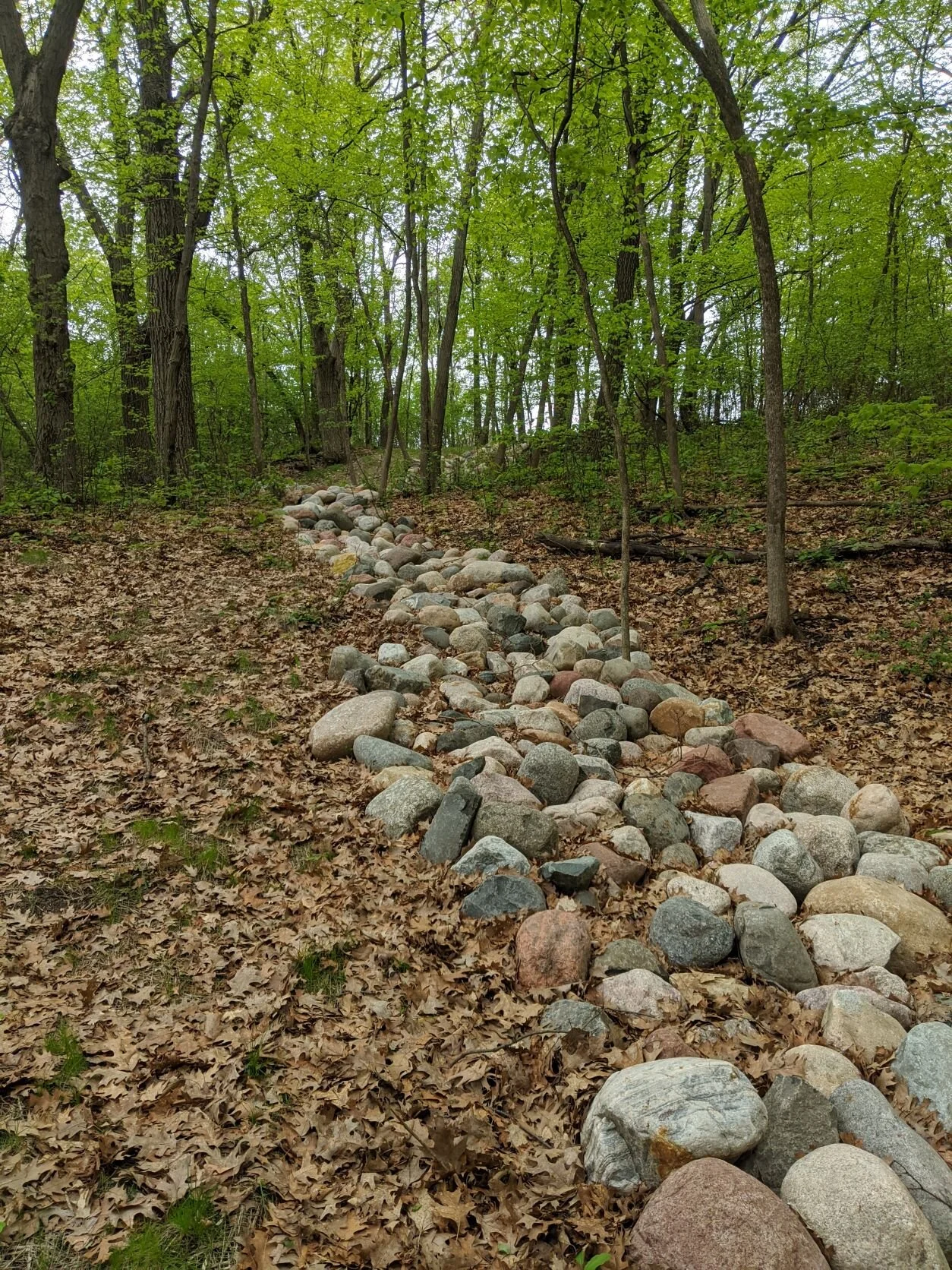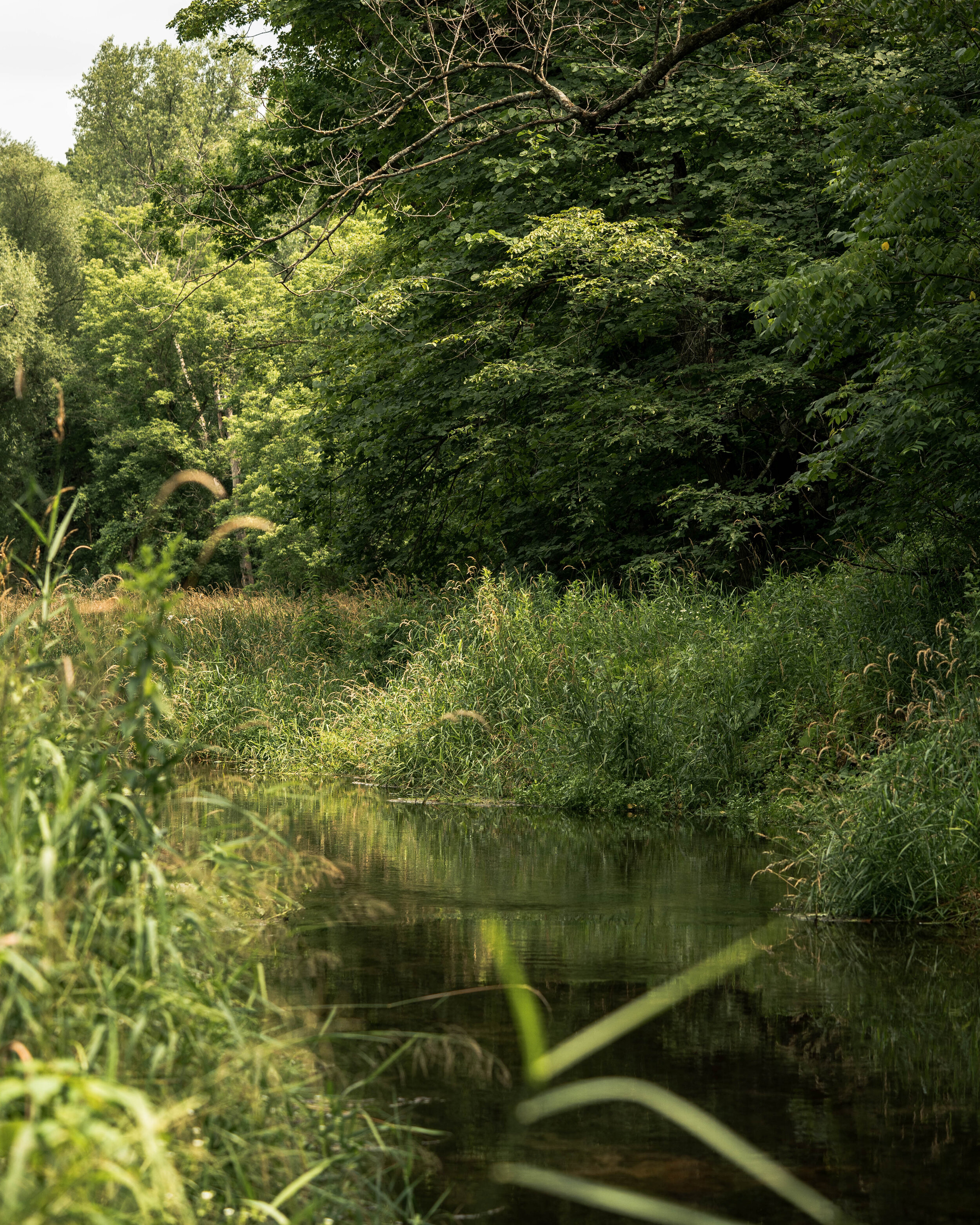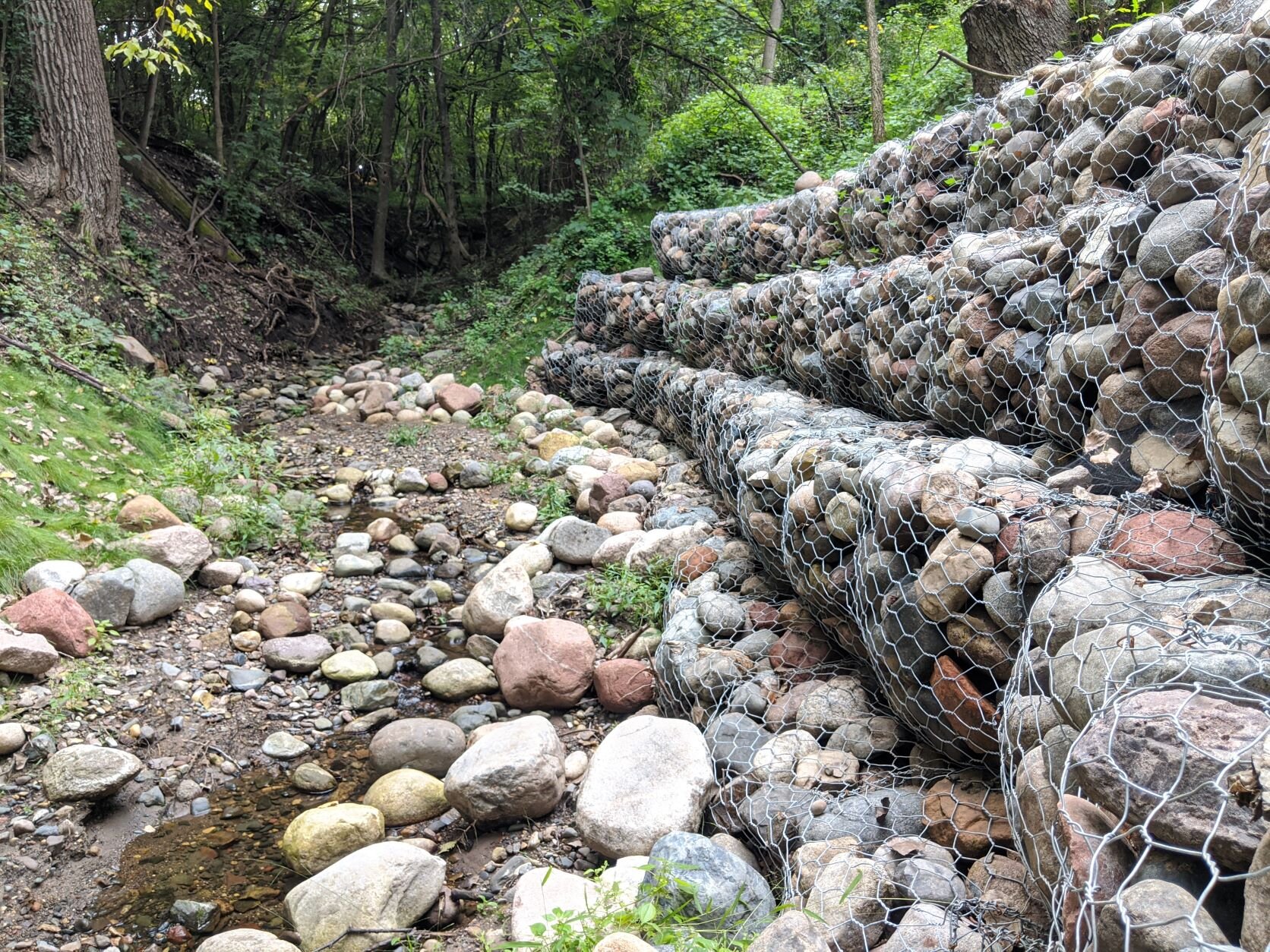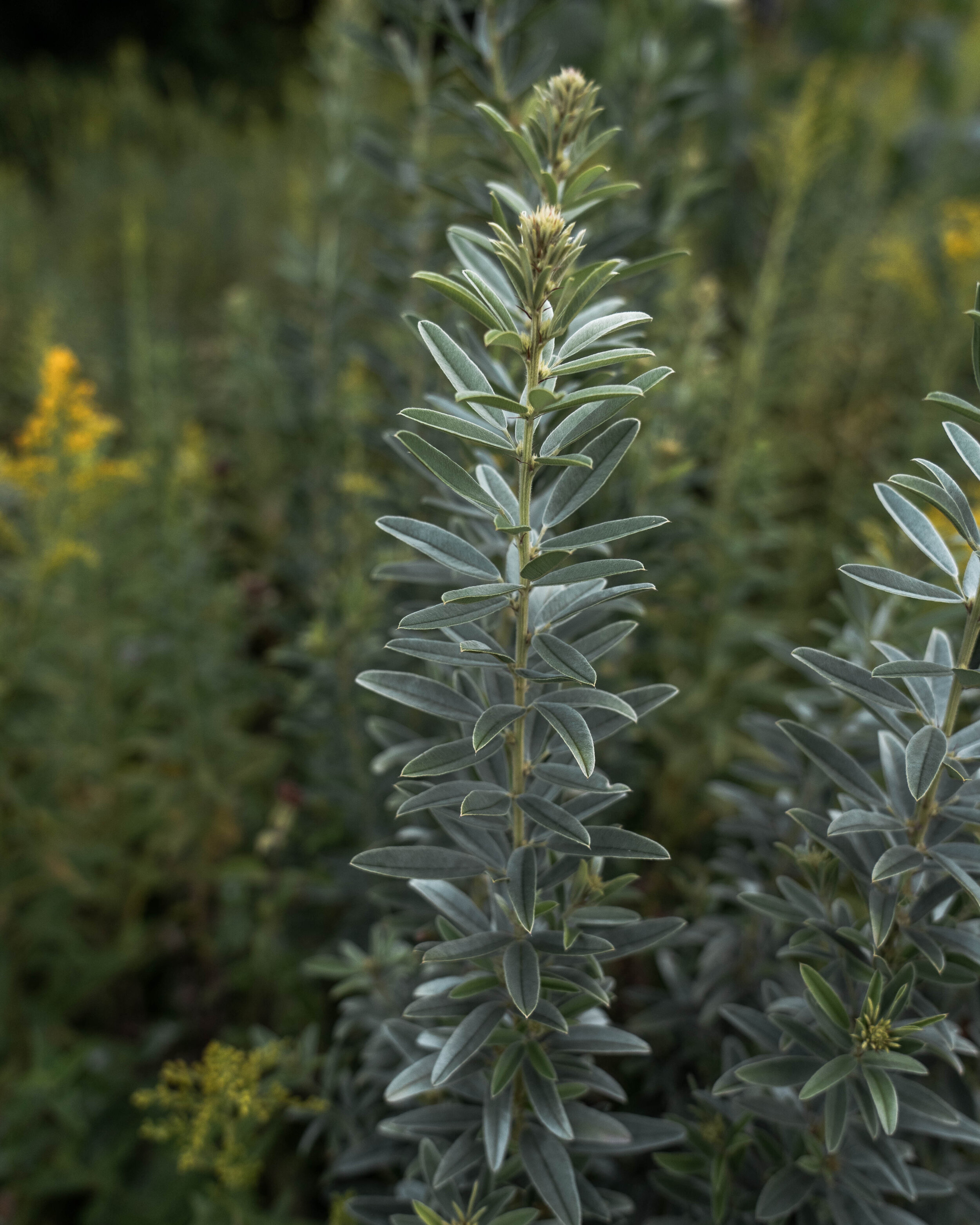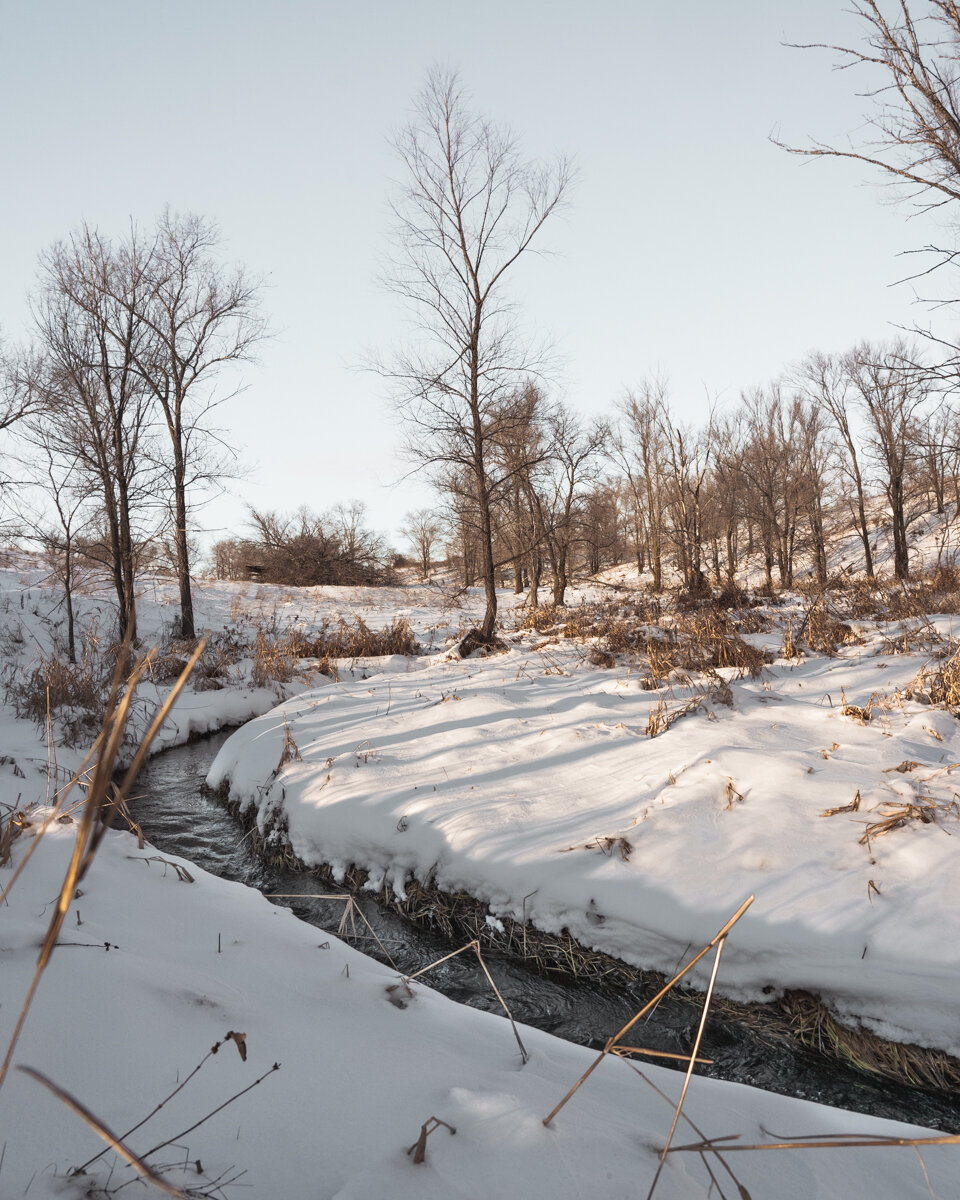Stream and Shoreline Restoration
Streams and shorelines are abundant features in our neck of the woods. Between our home base in the Land of 10,000 lakes, and our neighboring states, there are plenty of locations where water meets land. Unfortunately, these locations are prime spots for erosion issues, sediment deposition, and nutrient loading into waterways. Shoreline and stream bank restoration can help reduce or eliminate these issues, ultimately improving water quality, protecting water resources, and enhancing recreational use.
Common Waterway Issues
Erosion occurs when soil banks along a shore fall away into the waterway. This is a natural process that happens over time due to weather, but when this occurs too fast, it can have detrimental effects on water quality. It can also be a nuisance for development along shorelines--no one wants their house falling into the lake!
Sediment deposition often occurs in conjunction with erosion. A small amount of sand, rock, dirt, and litter is natural in lakes and streams, but extensive erosion or run-off can result in excessive sediment accumulating in water. This can block sunlight from reaching aquatic communities. High levels of sediment can also change natural water depths, which can affect the entire lake or stream ecology.
Nutrient loading refers to the accumulation of excess nutrients, especially nitrogen or phosphorus, within waterways. It can come from many sources such as fertilizer, grass clippings, plant litter, agriculture, etc. Excess nutrients may cause algae blooms which can lead to fish kill, increased mosquito breeding habitat, and poor conditions for recreation.
Why Invest in Shoreline Restoration
Shoreline and stream bank restoration can reduce or eliminate issues of erosion, sedimentation, and nutrient loading. Though it takes many forms, shoreline restoration often involves creating a buffer of vegetation along the edge of the waterway. Native plants have deep roots which hold soil in place, preventing erosion. Their above-ground mass can block and slow water run-off, limiting sedimentation deposition. Meanwhile their below-ground roots absorb nutrients, preventing them from running into the water.
By combining these natural processes with advanced engineering techniques, we can design shorelines that both provide recreation and aesthetic beauty while also protecting water and soil resources.
Remember, all water is connected. Restoring and protecting shoreline on one acre of land will enhance water quality through the whole watershed. If everyone in the upper Midwest took steps to protect and preserve their native shorelines, we could significantly improve water quality all the way down the Mississippi and into the Gulf of Mexico.
Urban Watershed Restoration
Urban cities face the unique challenge of protecting waterways while addressing stormwater management. Additionally, water within developed areas often faces extra stress from increased nutrient and sediment run-off from impervious surfaces. Balancing shoreline restoration with the demands of developed and urban landscapes is a challenge we take head-on. Our team has experience with many watershed restoration techniques including Rip rap, VRSS systems, Root wads, and more.
How We Get the Job Done
We have experience with many shoreline restoration, bank stabilization, and erosion control techniques:
Rip rap
VRSS
Root wads
Grading
Erosion control mats
Coir logs
Vegetation plugs
...and more!
Interested in erosion control specifics? --Check out our Erosion Control page to see how we tackle erosion problems.




